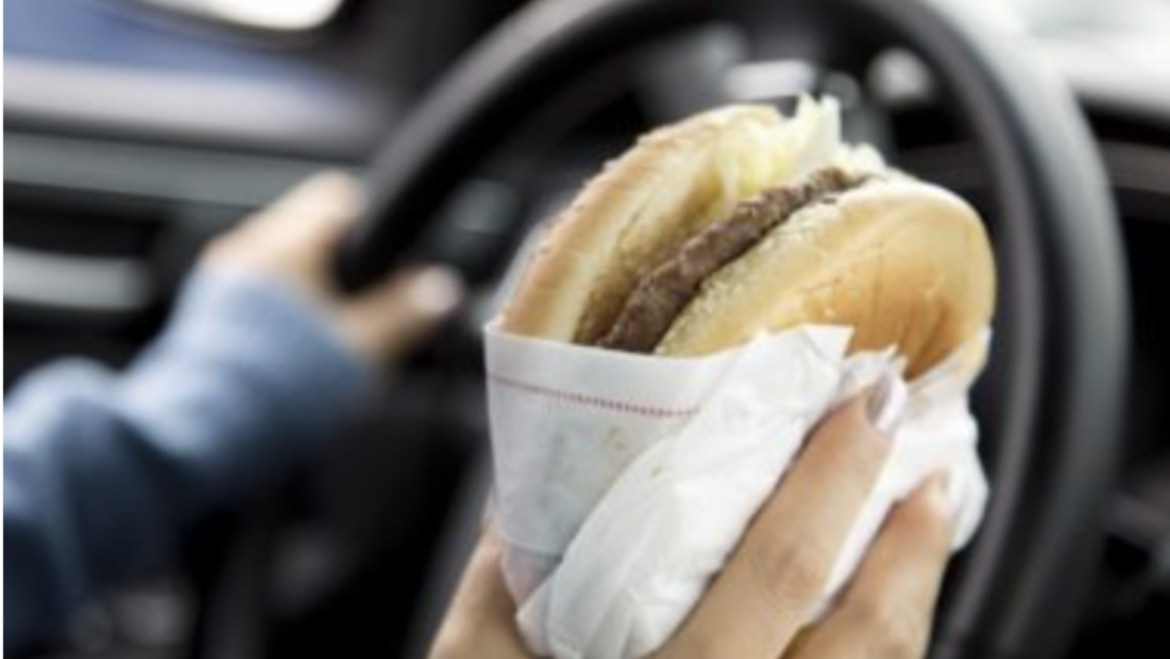Car Safety Distracted Driving
Distracted driving has been a matter of concern ever since the first cars rolled off the assembly line. In the early 1900s, when windshield wipers were first introduced on American cars, some worried that they would lull drivers into a daze.
In the 1930s, state legislators attempted to restrict the installation of car radios on the grounds that they could distract drivers and lead to crashes. Today, with text messages, social media notifications, and talking GPS apps, it’s no surprise that mobile devices have become synonymous with distracted driving.
Statistics show that roughly 10% of all fatal crashes involved distracted drivers. Of those distracted driving fatalities, 14% involved a cell phone. That means 86% of distracted driving fatalities didn’t involve a phone!
According to the Centers for Disease Control and Prevention (CDC), there are three main types of distractions while driving:
- Visual: looking away from the road
- Manual: activities that need you to take your hands off of the steering wheel
- Cognitive: thinking about things other than driving
Common Causes of Distracted Driving
The National Highway Traffic Safety Administration (NHTSA) found that distracted driving led to the deaths of 3,450 people in 2016 and in 2015 injured 391,000 people on roads in the United States. In the vast majority of these cases, the distraction was completely avoidable. Here are the nine common distractions:
- Interacting with a passenger
- Talking on a cellphone
- Holding an object other than a cellphone (i.e. a pet)
- Talking/singing/dancing
- Holding a cellphone
- Smoking
- Adjusting radio/climate control
- Eating
- Other cellphone interaction
What Can You Do to Prevent Distracted Driving?
Some of these distractions can be difficult to avoid. After all, it’s not like you’re going to go on a four-hour road trip and not talk to your passengers. In situations such as this, it’s helpful to find ways to mitigate the impact of distractions.
Eat first. One of the safest ways to keep yourself from becoming a distracted driver is to manage non-driving tasks before you get on the road. Eating, drinking, programming your GPS, or assisting passengers can be safer if done while parked.
Let passengers help. Passengers can be distracting. This is one of the reasons why most states passed graduated driver licensing laws restricting teens from having passengers in the car during their first year of driving. Letting your passengers help you with tasks —like answering the phone or adjusting the radio —can help you remain more focused on driving.
Pull over to attend to children. If children are in the car, be sure to pull over to a safe spot before tending to their needs. Don’t turn to reach into the back seat while driving or at a stop light.
Pull over to talk. Hands-free technology like a Bluetooth headset or integrated system can still take your mind off the road. Phone conversations may impair your ability to recognize and respond to something or someone on the road—even if you’re looking at it—because your attention is elsewhere.
The safest option for you, your passengers, pedestrians, and those in other vehicles is to only use your phone when you’re not on the road.
Don’t drive drowsy. Consider the time of day you decide to drive. The NHTSA estimates 71,000 annual drowsy driving injuries. If you can avoid drowsy driving, a common safety issue late at night, you can improve the odds of arriving at your destination safely.
Take the pledge to drive distraction-free. Download and print your certificate and commit to taking the safety measures necessary to avoid distractions while driving.
Apps or Products That Combat Distracted Driving
A buzz from your phone that a text, email, or social network notification is fresh and waiting can be a big temptation. Some phones and apps help you avoid distracted driving from the start by blocking notifications or limiting phone features. These features can even be used to monitor the driving of a family member, such as a new teen. Here are a few top options to get started:
- LifeSaver – This app uses your GPS to track when you’re in motion when you arrive at your destination and blocks text messages and calls while you drive. It has an in-app rewards system that incentivizes safe driving. It also offers options for parents and fleet managers.
- DriveMode – This app gives you quick shortcuts to apps you may want to use when driving, like GPS and music, while blocking other distractions. It runs on voice-enabled commands and allows you to interact with apps including Google Maps, Waze, Pandora, Spotify, and more.
- Built-in features – Modern Android and iPhone devices all have driving features built in. Check out driving modes in your phone settings and do not disturb modes as a way to block those calls and messages from showing up.
- Telematics – Telematics is a technology that is available via an app on your Smartphone or a dongle that you plug in to your vehicle to monitor and provide real-time feedback on your driving habits. The dongle and app both alert you to behaviors such as hard breaking, speeding, mileage, and late-night driving. The app also layers in distracted driving events. This feedback can help drivers become more aware of their driving habits and improve them over time. Some insurance companies offer discounts to drivers who use Telematics technology and demonstrate favorable driving behaviors.
Also, remember.
Use care when accessing in-car systems while on the road. Some systems prevent use while moving. This is one of many technologies aimed to improve your safety on the road.
Is Distraction a Young Driver’s Problem?
Experienced drivers often believe that they can manage distractions while driving better than novice drivers. But driver distraction is present among drivers of all ages and education on how to prevent it is imperative. While drivers under age 20 have the highest proportion of distraction-related fatal crashes, according to the National Center for Statistics and Analysis, distracted driving dangers transcend all ages.
Of distracted driving crashes, only 9% came from people under 20 years old, according to the NCSA study. Adults 40 and above were responsible for 23% of distracted driving wrecks. Don’t let the number of years you have behind the wheel lead you to believe that you’re immune to distraction while driving. Experience is no substitute for safe driving habits. It is important though to communicate to your young driver about the possible distractions on the road before they get their license.
Moving Forward as Better Drivers
The technology that helps contribute to a safer driving experience is always improving. Safer driving leads to fewer claims and lower auto insurance costs. That’s a big win for any driver. Auto manufacturers are making crash avoidance technologies, such as blind spot warnings and collision avoidance systems, common in new vehicles. In fact, backup cameras are required to be in all new lightweight vehicles..
Traffic engineers are employing roundabouts, red light cameras, and road condition warnings to make driving safer. But regardless of emerging technology, policies, and processes, there is no replacement for focused, alert driving.
If you are one of the millions of Americans stuck in a daily traffic jam, follow best practices to avoid a traffic jam fender bender. And regardless of how long you’ve been driving, stay focused on safe practices like defensive driving and avoiding road rage.
“To effectively tackle the problem of distracted driving, we need a broader approach that takes into account the many and varied sources of driver distraction,” says IIHS president Adrian Lund. “Singling out cellphones may lead drivers to disregard the fact that other behaviors that divert their attention from the road are risky, too.”
Some of the biggest dangers we face on the road come from inside the cabin of our own vehicle. As all roads will have hazards, all commutes will have their share of distractions. Although these can’t always be avoided, at least the negative effects may be reduced through careful consideration and planning.
It’s the Law
Also, keep in mind that distracted driving may be a criminal offense depending on the distracted driving laws in the state you live in. If a police officer catches a glimpse of you looking at your phone while on the road, they can often pull you over and issue a citation. That can lead to higher insurance premiums plus the cost of the ticket itself.
Share your story in the comments.
If you have any tips for avoiding distracted driving, please share them as well to help keep us all safer while out on the road!
Woodhome Insurance
Home – Auto -Business
(410) 580-2800
#businessinsurance #MarylandInsurance

